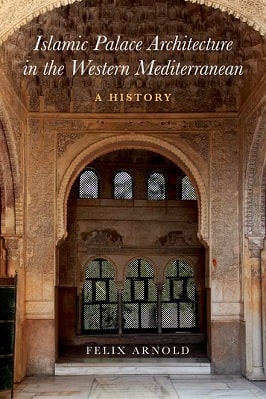
| Islamic Palace Architecture In The Western Mediterranean |
| FELIX ARNOLD |
| 385 |
| |
| PDF Direct Download Link |
| Click for Hard Copy from Amazon |
Islamic Palace Architecture in the Western Mediterranean – A History by Felix Arnold
ISLAMIC PALACE ARCHITECTURE IN THE WESTERN MEDITERRANEAN
Book Contents
- Acknowledgments
- Chronology of the Islamic West
- Glossary of Arabic and Spanish Terms
- Introduction
- The Formative Period
- The Age of the Great Caliphates
- The Age of Diversity and Disintegration
- The Great Reform Empires
- The Epigones of Empire
- Early Modern Period
- Conclusion: Concepts of Space and Rulership in the Islamic West
- Image Sources
- Bibliography
- Index
The author says: The idea for this book originated in a scholarship I received from the German Archaeological Institute in 2000 to study the domestic architecture of Islamic Spain. I was subsequently able to study two examples of palatial architecture in detail, first the palace on the Alcazaba of Almería (2001–2004), then the country estate ar-Rummāniya at Córdoba (2006–2014).
I also profited greatly from discussions with many colleagues across Spain, including Antonio Almagro Gorbea, Julio Navarro Palazón, and Antonio Orihuela Uzal in Granada and Alberto León Muñoz in Córdoba. The fieldwork was made possible by kind permission of the Junta de Andalucía.
A first draft of this book was written in German as part of a Habilitation at the Technical University at Munich.
Book introduction
In the Alhambra, the sultan of Granada received foreign emissaries in a huge
domed hall, known today as the Sala de los Embajadores.1 The square hall, the largest of its kind ever built by Islamic architects on the Iberian Peninsula, was covered by a wooden roof construction.
The vaulted ceiling was decorated with a geometric pattern suggesting a sky with seven rows of stars. An inscription along the base of the ceiling makes reference to God as lord of the heavens. The sultan himself was not seated below this dome but in an adjoining niche, looking onto the large square space. The back of this niche was open, providing a view of the city of Granada.
Three centuries earlier, the caliph of Córdoba had been seated in a very differ- ent kind of room—in the Salón Rico of his palatial city near Córdoba, Madīnat az-Zahrā’.
The hall is divided by two arcades into three naves, not much unlike a church, though all naves are of equal width and height.
The inscriptions along the walls do not refer to the heavens but to the patron of the hall and the officials who supervised its construction. The caliph was seated on a couch (sarīr) in the
back of the hall, overlooking the hall in front of him (fig. I.1).2 The back wall was closed; the seat of the caliph was indicated only by a blind arch.
In architectural terms, the two spaces belong to very different types. One is a square domed hall, focused on its center, though with windows to the exterior.
The other is a multinaved, columned hall, which establishes an axis that extends from the throne of the caliph outward, toward a reflecting pool and a garden. The rulers who built these halls had very different ideas about their roles.
The caliph of Córdoba laid claim to the highest position in Islamic society. As successor (ḫalīfa) of the prophet Muḥammad, he was responsible for the propagation and safeguarding of religion, for holy wars (ǧihād), and for the dispensing of justice.
The sultan of Granada, on the other hand, was well aware of his limita- tions. At least in theory, he pledged allegiance to a faraway caliph—at that time the Abbasid caliph residing in Cairo.
In practice, he based his legitimacy on his piety, his military success, and his diplomatic skills. By treaty, he was the vassal of a Christian king, the king of Castile residing in Seville.
Is there a connection between architectural form and ideas of rulership? In what way did the columned hall of Madīnat az-Zahrā’ seem suited for the caliph of Córdoba but not for the sultan of Granada three centuries later?
To put it in more general terms, in what way did palatial architecture change over time? And how did this change come about? These are some of the questions this study attempts to address.
To read more about the Islamic Palace Architecture In The Western Mediterranean book Click the download button below to get it for free
or
Report broken link
Support this Website
for websites